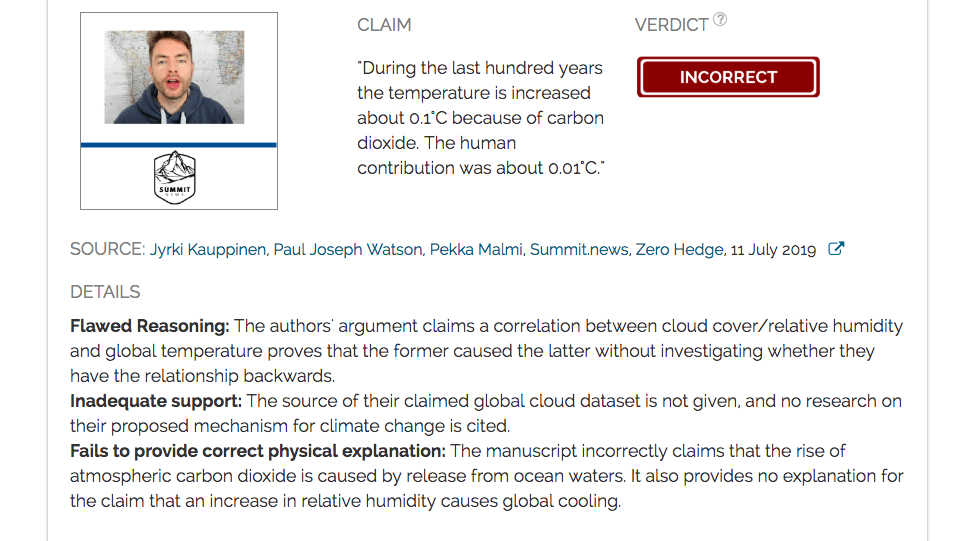It's not my theory, dear.
Since it's not CERN's theory, it has to be your theory.
Can you to back up your claim with a link that CGR don't influence cloud cover either through the formation of new aerosols (tiny particles suspended in the air that can grow to form seeds for cloud droplets) or don't directly affect clouds themselves?
You should have learned by now that unlike you and your cult, I can always back up what I say.
Benestad 2013
ShieldSquare Captcha
iopscience.iop.org
Variations in the annual mean of the galactic cosmic ray flux (GCR) are compared with annual variations in the most common meteorological variables: temperature, mean sea-level barometric pressure, and precipitation statistics. A multiple regression analysis was used to explore the potential for a GCR response on timescales longer than a year and to identify 'fingerprint' patterns in time and space associated with GCR as well as greenhouse gas (GHG) concentrations and the El Niño–Southern Oscillation (ENSO). The response pattern associated with GCR consisted of a negative temperature anomaly that was limited to parts of eastern Europe, and a weak anomaly in the sea-level pressure (SLP), but coincided with higher pressure over the Norwegian Sea. It had a similarity to the North Atlantic Oscillation (NAO) in the northern hemisphere and a wave train in the southern hemisphere. A set of Monte Carlo simulations nevertheless indicated that the weak amplitude of the global mean temperature response associated with GCR could easily be due to chance (p-value = 0.6), and there has been no trend in the GCR. Hence, there is little empirical evidence that links GCR to the recent global warming.
---
Erlykin et al 2013

A review of the relevance of the ‘CLOUD’ results and other recent observations to the possible effect of cosmic rays on the terrestrial climate - Meteorology and Atmospheric Physics
The problem of the contribution of cosmic rays to climate change is a continuing one and one of importance. In principle, at least, the recent results from the CLOUD project at CERN provide information about the role of ionizing particles in ’sensitizing’ atmospheric aerosols which might, later...
The problem of the contribution of cosmic rays to climate change is a continuing one and one of importance. In principle, at least, the recent results from the CLOUD project at CERN provide information about the role of ionizing particles in ’sensitizing’ atmospheric aerosols which might, later, give rise to cloud droplets. Our analysis shows that, although important in cloud physics the results do not lead to the conclusion that cosmic rays affect atmospheric clouds significantly, at least if H2SO4 is the dominant source of aerosols in the atmosphere. An analysis of the very recent studies of stratospheric aerosol changes following a giant solar energetic particles event shows a similar negligible effect. Recent measurements of the cosmic ray intensity show that a former decrease with time has been reversed. Thus, even if cosmic rays enhanced cloud production, there would be a small global cooling, not warming.
---



